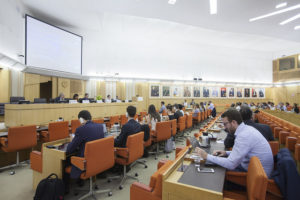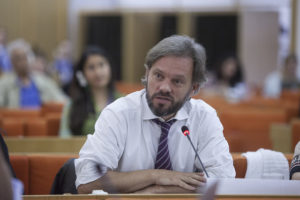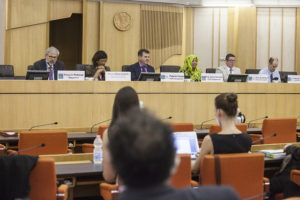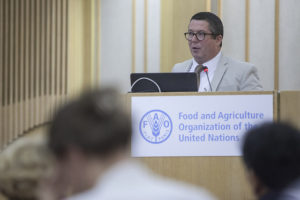
The High Level Panel of Experts (HLPE) launched on June 27 a landmark report on sustainable forestry for food security and nutrition (FSN). The HLPE is the independent science-policy interface of the United Nations Committee on World Food Security (CFS). It provides a comprehensive evidence base for the political, multistakeholder discussions at the CFS.
The launch marked the first time that the CFS discussed the contributions of forests and trees to world food security, and how to enhance them. This is a very significant debate at UN level.
The CGIAR Research Program on Forests, Trees and Agroforestry (FTA) welcomes this report, and is proud to have significantly contributed to its elaboration by providing science and knowledge. The project team leader for the report, Terry Sunderland, a Centre for International Forestry Research (CIFOR) scientist, is also a research cluster leader for FTA.
Forest and trees: key to food security and nutrition

The report presents a very compelling argument for the contribution of forests across the four major dimensions of food security and nutrition, which are availability, access, utilization and stability.
Forests and trees contribute directly and indirectly to food security and nutrition in many ways: the provision of food, primary energy (wood fuel for cooking), employment and income, and ecosystems services such as water regulation, soil protection, pest control pollination, and protection of biodiversity, which are all critical for sustainable food security and nutrition.
In addition, they play an important role in climate change mitigation at the global level, and adaptation at the local level, particularly in certain areas of the world and especially for those communities, often the most marginalized, that rely on forests for their livelihoods.
A new perspective, beyond arbitrary divides
A novelty of this report is that it goes beyond and leaves behind the traditional and somewhat arbitrary divides and distinctions between forest types and definitions, toward a more holistic approach to the roles of forests and trees, and the diversity of situations and roles of trees in landscapes, agriculture, farms and food systems, as key contributors to sustainable development, food security and nutrition.
Recommendations
The report makes 37 recommendations, grouped under the following seven headings, which pave the way for an action agenda on forests and trees for food security and nutrition:
-

Rapporteur Francois Pythoud (left to right), FAO Deputy Director-General Climate and Natural Resources Maria Helena Semedo, HLPE Chairperson Patrick Caron, CFS Chairperson Amira Gornass, Project Team Leader Terry Sunderland and HLPE Coordinator Nathanael Pingault launch the report at FAO Headquarters. Photo ©FAO/Giulio Napolitano Develop and use policy-relevant knowledge on the direct and indirect contributions of forests and trees to FSN
- Enhance the role of forests in environmental processes at all scales without compromising the right to adequate food of forest-dependent people
- Support the contributions of forests to improve livelihoods and economies for FSN
- Promote multifunctional landscapes for FSN that integrate forests and trees as key components
- Acknowledge the importance and strengthen the role of forests and trees in enhancing resilience at landscape, community and household levels for FSN
- Recognize and respect land and natural resource tenure and use rights over forests and trees for FSN
- Strengthen inclusive forest governance systems across sectors and scales for FSN
Implications for the research agenda, and for FTA
This report, at the same time as taking stock of the breadth of existing knowledge on the role of forests and tree-based systems for FSN and their potential contribution to reducing global hunger and malnutrition, also highlights the need for further data collection and analysis that will enable the case-by-case assessment all of these contributions, whom they benefit, and at which geographical and temporal scales.

The HLPE report also shows the need for a better understanding of the drivers of change, and of the dynamics at play in landscapes — all areas that are at the heart of FTA research.
Situations are very diverse, socio-economical contexts are very different, and this shows the need for options-by-contexts to make the most of this potential. In FTA, we have good examples of what works, and how this can work in partnership for impact.
FTA can provide the evidence and tools to generate, pilot and, with partners (governments, the private sector, foresters and farmers), to scale-up and scale-out a range of solutions, according to a diversity of contexts.
We look forward to the discussion and the expressions of need in relation to research that will be discussed in the CFS policy convergence process, which will lead to decisions at the upcoming CFS 44 plenary on October 9-13, 2017.
We will use the results of that process to inform FTA’s future research priorities, and to fine-tune these to the needs of stakeholders for even greater relevance, legitimacy and effectiveness in the work we do.
By Vincent Gitz, FTA Director.











